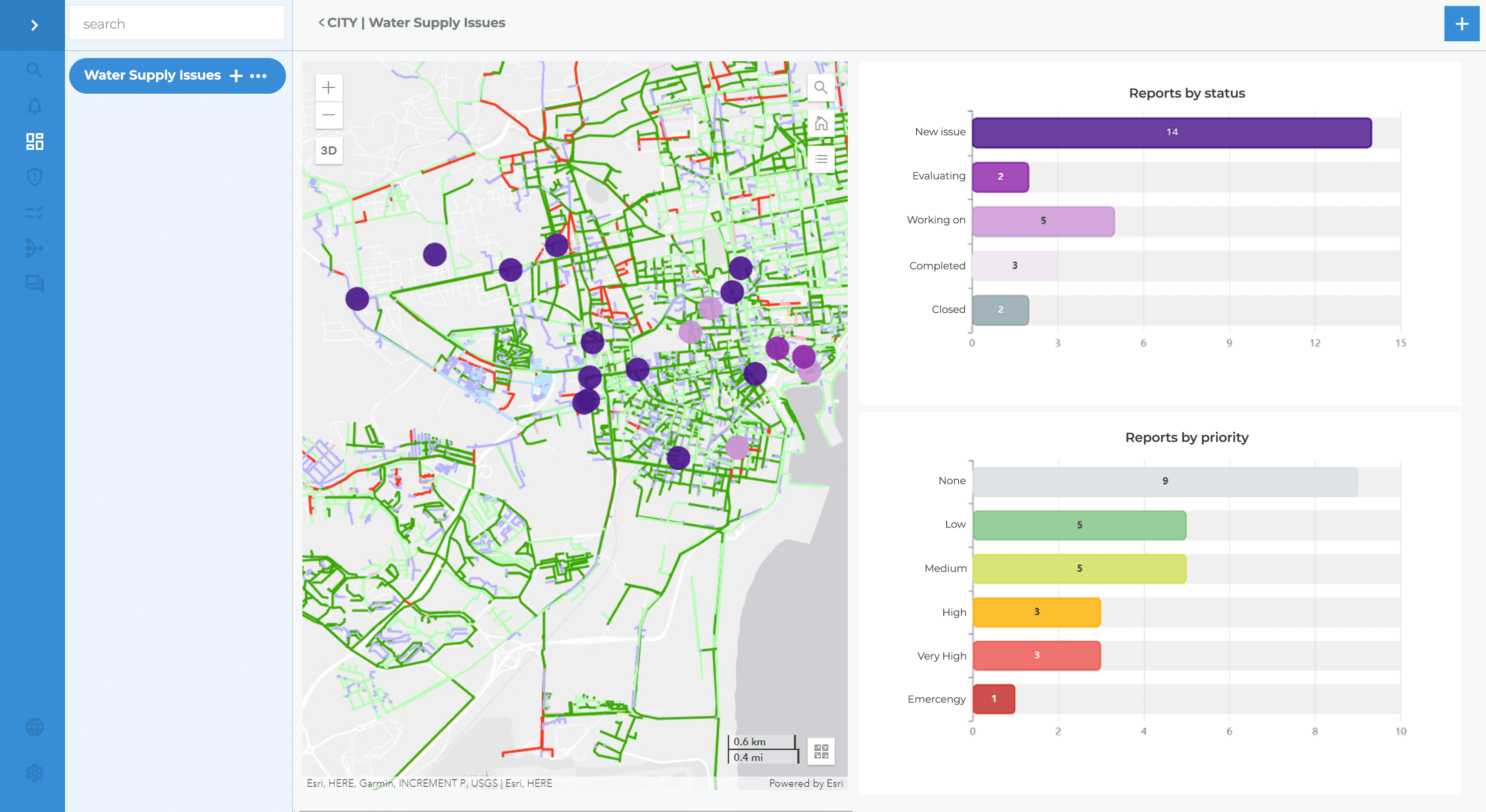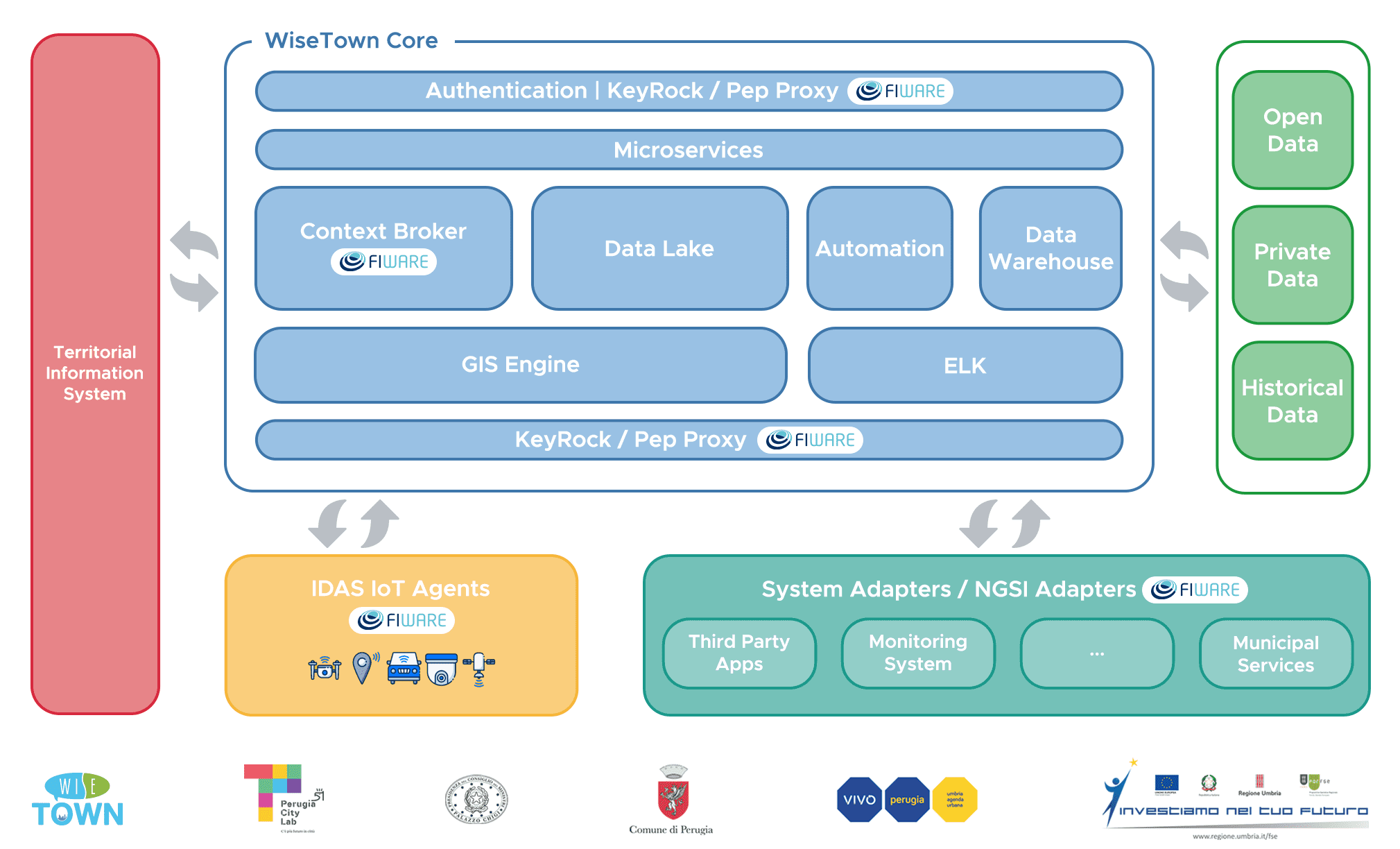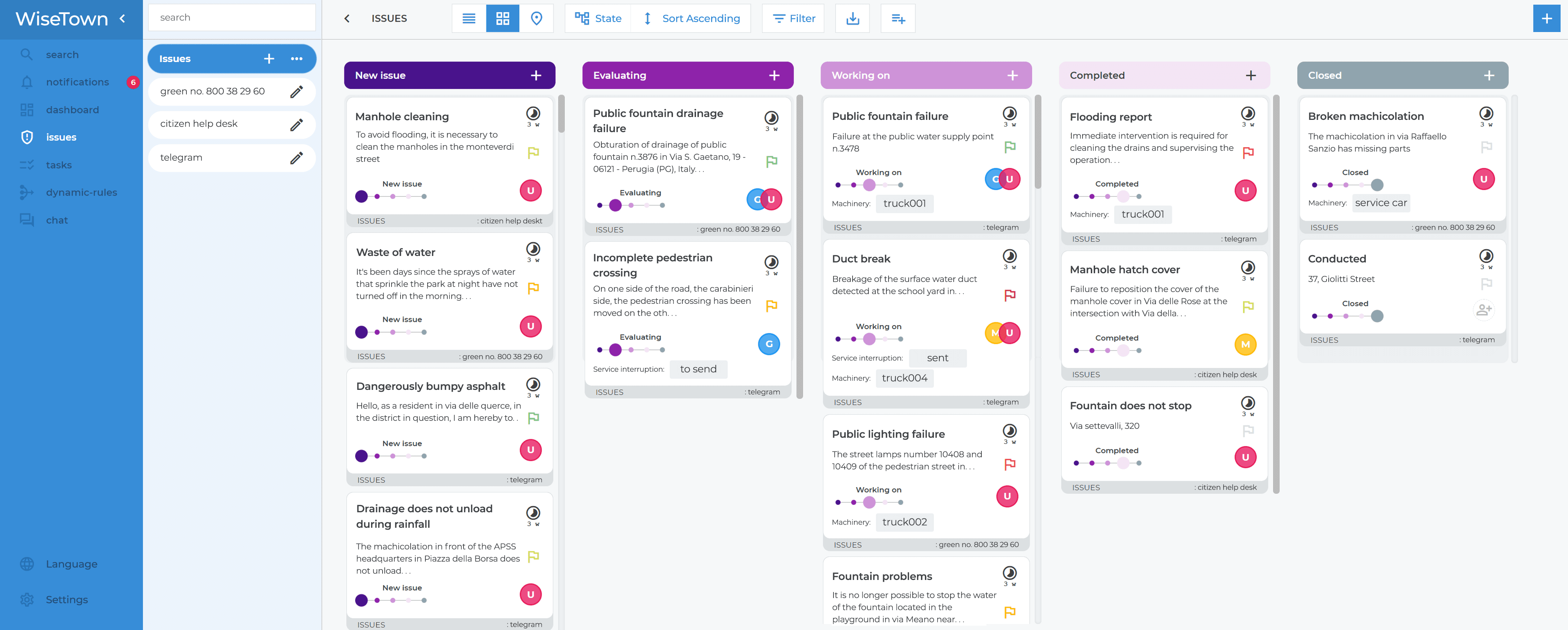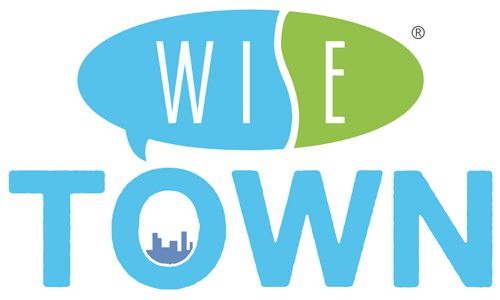Challenge & Context
The United Nations’ 2030 Agenda and, in particular, Sustainable Development Goal number 11, addresses the international community, asking all the countries involved to work, both individually and collectively, with the aim of making cities and human settlements inclusive, safe and sustainable. Currently, more than half of the world’s population lives in cities, and it is estimated that urban agglomerations will continue to grow leading to an urban population equating to around 70% by 2050.
Considering these transformations, the need to make our cities ready to face these future challenges is putting decision-makers, companies, and individuals under increasing pressure.
The city of Perugia (Italy) is the main urban centre of the Umbrian region, not only in terms of administration but also based on its economy, social and cultural settings. Perugia has a population of around 165,000 inhabitants, a municipal area that extends for about 449 km² with a population density of 363.32 inhabitants / km². This means a vast territory requiring efficient and punctual services, supported by an ongoing construction of communication channels between public administration and citizens.
With the aim of creating a governance oriented towards the needs of citizens and focused on improving the work of the public administration, the municipality of Perugia required a technological system that guaranteed an efficient collection and management of city data, with the integration of IoT services and technologies, a decision support system and other tools to promote the active participation of citizens. Most importantly, the goal was to have a digital infrastructure capable of integrating technologies already implemented in the municipality, making them more efficient and useful for all the stakeholders involved in the public sector (professionals, workers, citizens).
The municipality was already equipped with a wide range of devices and sensors, but the results of these technologies have been almost wasted so far, amounting in a vast quantity of unrelated data too complicated to process, which leads to a waste of time, money, and resources.
The need for a digital transformation was consulted with Agenda Urbana Perugia, a strategic effort conveying European and regional funds to multiple objectives. At the end of the consultations related to the projects within Agenda Urbana, the city of Perugia decided to choose WiseTown with its enabling infrastructure for smart cities to help innovate and create value from currently unutilized data. The solution is based on FIWARE technologies and capable of responding to the infrastructural needs required by the city.
WiseTown supports Perugia by transforming it into a digital city, suitable for citizens, efficient, safe, sustainable, accessible, and able to develop a participatory and integrated approach to facilitate decision-making.
Moreover, the European technological standards adopted in the construction of WiseTown, as well as the integration with FIWARE technologies, allow Perugia to comply with the European standards outlined by the CEF (Connecting Europe Facility), putting the city on the same level as other bigger European Smart Cities.
Solution
WiseTown meets the needs of the city of Perugia by integrating its software infrastructure within the existing systems of the municipality, to manage large amounts of data from different sources, such as geographic information systems, satellite images, Internet of Things (IoT) sensors, Open Data and other existing services, designing a single intelligent system for data management and analysis.
The use of FIWARE technologies, which enable the harmonization of data through smart data models, allows the project to respond to the need of the municipality of having a standardized functional system for the collection, organization and use of data. Therefore, WiseTown offers an open, interoperable and expandable model, perfectly aligned with the European directives for Smart Cities.
Figure 1 . The WiseTown Situation Room
Through its infrastructure, WiseTown collects and eases the interaction among several applications with different functionalities. The range of components created is quite wide: decision support systems, information display modules dedicated to specific topics, open data management tools, through to services dedicated to taking charge of the reports received from citizens.
By integrating WiseTown within the control and data management systems of the municipality, Perugia can finally make the most of the technological tools provided to European capitals.
This standardization allows information to be managed logically and new applications to be integrated, which helps in establishing crucial collaborations among cities, universities, and research centres. Perugia can be aligned with other European Smart Cities also on the significant issue of improving the quality of life of its inhabitants.
How it works
The Smart City enabling infrastructure developed by WiseTown for the capital city of the Umbria region collects data from different sources: from the Territorial Information System already used by the municipality, IoT sensors, monitoring systems installed in the city, open data, historical data as well as data coming from applications used in public administration and external parties.
Moreover, using European recognized standards, the infrastructure can be modulated to integrate pre-existing and future applications and procedures carried out by the municipality.
Figure 2 . The architecture of WiseTown platform
In addition to the operations of ingestion, Data Lake configuration, data indexing, classification and publishing represent the core of the WiseTown solution, based on FIWARE systems. There are also several services that allow the user to interact with the information collected and to employ them for multiple purposes.
Some of these interaction components are, for instance, WiseTown Geoanalytics, dedicated to supporting the decision-making process of the public administration. This tool is in fact committed to the analysis of data on a spatial basis. WiseTown Situation Room instead, allows the monitoring of a specific geographic area in a specific time-lapse, as in the case of critical city events, while WiseTown Issue Manager optimizes the collection and management of reports that citizens want to address the public administration with.
These are just some of the components that complete WiseTown’s offer for the municipality of Perugia which, through structured and specific training, is accompanied in the process of appropriating the data processing tools.
The WiseTown ecosystem, with the aim of ensuring the highest degree of scalability, is structured according to a microservices logic. This approach makes the system highly functional, scalable, flexible and, even though conformed to the contemporary requests of the city, easily adaptable to any upcoming needs.
Benefits & Impact
The city of Perugia has chosen the software infrastructure FIWARE WiseTown as a technological engine for its transformation into a Smart City, to improve the public administration efficiency and urban services as well as placing the citizens and their needs at the center of planning.
The adoption of a data infrastructure entails numerous benefits for the city and for the over 165,000 inhabitants, as well as for the tourism sector of the territory and for the academic universe which every year welcomes a large number of students from all over Italy and abroad.
Figure 3 . The WiseTown Issue Manager
WiseTown represents the solution to the structural technological criticalities of Perugia, a city with a large amount of data produced by multiple administration departments that rarely shares information between departments due to the lack of common standards.
The city of Perugia decided to equip itself with a range of solutions, already approved at European level, based on a standardization that involves costs and resources optimization, technologies harmonization and that contributes to achieve quality levels of services in line with the policies of big European cities.
In the relationship between community and administration, WiseTown brings considerable benefits, allowing the adoption of useful tools in responding effectively and efficiently to the needs of citizens and stimulating forms of active participation in the social and political life of the city.
Among the numerous services offered, there is also the development of a criticality reporting app — thanks to which the citizen becomes a spokesperson for the problems of the city, generating an “issue” automatically converted into a “task” which is then assigned to a certain administration department. A process that strengthens the relationship of trust between decision makers and citizens.
The potential of the FIWARE-based platform and the consequent social impact have also prompted from the interest of the world of academic research and technological innovation, making WiseTown a real aggregator of Universities and Research Centres interested in employing the data collected to develop further analysis.
Added value through FIWARE
WiseTown services are achieved by using FIWARE technology which offers open-source components capable of significantly accelerating the development of intelligent and innovative solutions for Smart Cities. The use of FIWARE technology also ensures the perfect alignment of the WiseTown ecosystem with the European strategies, which have been investing for years to bring IT solutions towards interoperability and standardization.
At the same time, the data infrastructure is interoperable because it is based on the latest European standards. The Smart City Enabler developed by WiseTown uses NGSI-LD data models for the information flows standardization and it chooses Smart Data Model standards jointly developed and marketed by FIWARE Foundation, TMForum, IUDX (Indian Urban Data Exchange) and OASC (Open & Agile Smart Cities) recognized at European level for Smart Cities, and beyond the high degree of interoperability is also guaranteed using the Connecting Europe Facility. Among these, FIWARE Context Broker is the FIWARE Generic Enabler chosen to be used as a messaging and context information management broker.
FIWARE IDM Keyrock and FIWARE PEP Proxy — Wilma are the components identified to ensure the necessary degree of security for the city’s data infrastructure.
These are just some of the technologies provided by FIWARE that WiseTown has been using for a long time, and among these, there is also FIWARE GE IDAS which, made up of a wide range of IoT Agents, offers the possibility of interacting with multiple and varied types of sensors.
The use of widely validated as well as innovative FIWARE solutions allows, on one hand, to respond effectively to the specific needs of the Umbrian capital and, on the other, to align the context of Perugia with the technologies widespread at European level.
Next Steps
The prerequisite for the activation of the city data infrastructure is also to be found in a renewed view of the data by the municipal administration.
“The construction of the new platform is based on the assumption that data sovereignty is a city’s common good,” states Gabriele Giottoli, Councilor for Marketing and Digital Perugia, whilst summarizing the objectives of the project.
The intention of the municipality is to use the data that the city already produces in large quantities to improve the quality of life of its citizens. With these clear objectives, the Municipality of Perugia embarked on the innovative process that led to the identification of the WiseTown solution into the extensive Agenda Urbana Program.
This innovative process, in addition to leading the realization of the city objectives, is revealing some future potentials related to the adaptation of the Umbrian regional capital to European Smart City directives. Providing the city with the tools already used in many international capitals makes Perugia a new exchange hub between local, European and global realities.
References
- WiseTown
- Comune di Perugia (Italian Language only)
- Perugia City Lab (Italian Language only)
- Agenda Urbana Perugia (Italian Language only)
- TeamDev




